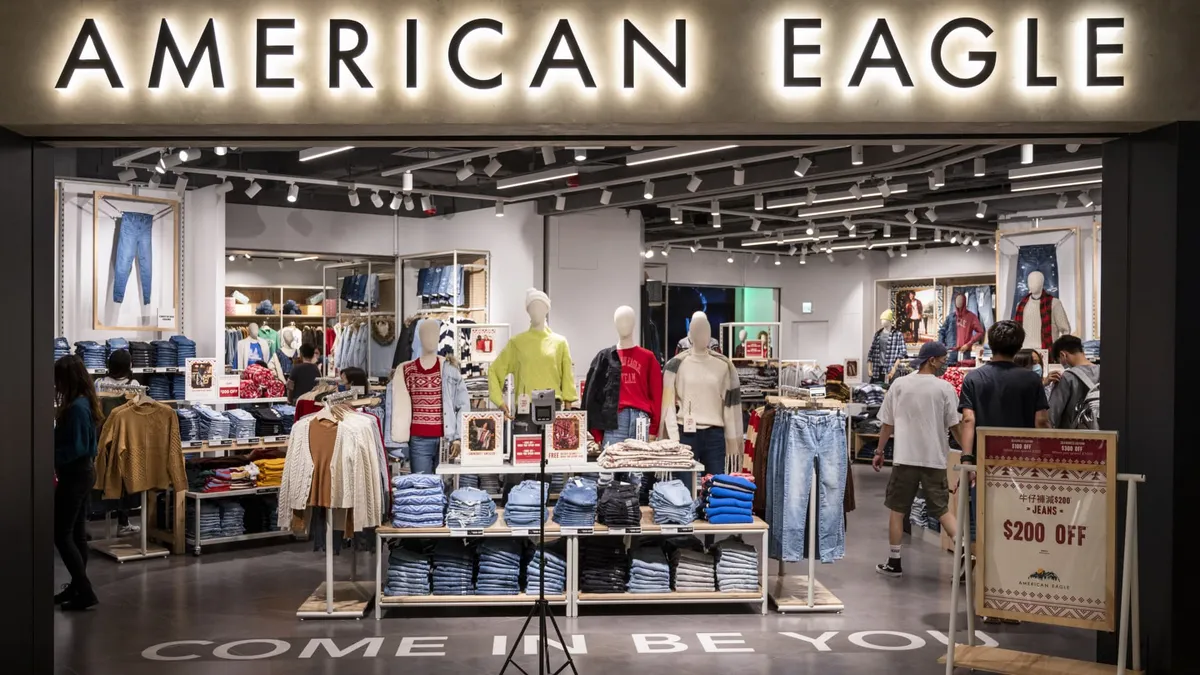
On Wednesday, American Eagle issued a cautionary statement to investors, highlighting a significant pullback in consumer spending as the company enters 2025. CEO Jay Schottenstein noted that the first quarter is starting off slower than anticipated, attributing this trend to a combination of less robust consumer demand and colder weather conditions. In a recent news release, Schottenstein expressed optimism for improvements as the Spring season approaches but also emphasized the need for proactive measures to strengthen the company's top-line performance, manage inventory effectively, and reduce expenses.
The announcement led to a decline in American Eagle's shares, which fell approximately 5% in extended trading. This discouraging outlook, paired with weak guidance for both the current quarter and the upcoming year, signals potential challenges for the company as consumers grapple with persistent inflation and tariff-related concerns. Over the past few weeks, a number of retailers—ranging from strong industry players to those facing difficulties—have provided similarly weak guidance, indicating a broader trend of slowing consumer spending that could impact sales throughout 2025.
Despite the grim forecast, American Eagle reported mixed results for the holiday season. The company's comparable sales exceeded expectations, showcasing resilience amid challenging conditions. Here’s a breakdown of American Eagle’s fiscal fourth-quarter performance compared to Wall Street's predictions, based on a survey by LSEG:
Earnings per share: 54 cents vs. 50 cents expected Revenue: $1.60 billion vs. $1.60 billion expectedAmerican Eagle's reported net income for the three-month period ending February 1 reached $104 million, translating to 54 cents per share, a significant increase from $6.31 million, or 3 cents per share, in the same period a year earlier. However, sales dipped slightly to $1.60 billion, down from $1.68 billion in the previous year. The company faced challenges due to an extra week in the year-ago period, which skewed performance results. Notably, comparable sales, which exclude the effects of one less selling week, rose by 3% during the quarter, surpassing expectations of 2.1%, according to StreetAccount.
American Eagle's Aerie line, which focuses on intimates and activewear, was a key growth driver, reporting a 6% increase in comparable sales. In contrast, the namesake brand experienced a more modest growth of 1%. Looking ahead, American Eagle anticipates a mid-single-digit decline in sales for the current quarter, while analysts had expected a revenue increase of 1.3%. For the full year, the company predicts a low single-digit sales decline, contrary to analysts' forecasts of 3% growth.
Over the past year, American Eagle has made notable progress in enhancing profitability yet has struggled with sales growth. The company has missed Wall Street's sales expectations in three consecutive quarters, and its recent revenue figures, while in line with predictions, did not exceed them. American Eagle has previously acknowledged the challenges posed by an uncertain economic environment, with consumers displaying shopping behavior that is often limited to key moments. This trend is now echoed by a variety of other retailers as the economic landscape shows signs of strain.
In February, consumer confidence experienced its largest decline since 2021, coupled with slower-than-expected job growth and a slight increase in unemployment rates. These developments have heightened concerns about a potential recession, especially if ongoing trade tensions, particularly President Donald Trump's trade war with Canada, Mexico, and China, continue. A weakening economy poses significant challenges for retailers, particularly those like American Eagle that rely heavily on discretionary spending.
As American Eagle navigates this uncertain landscape, more insights are expected during an upcoming conference call scheduled for 4:30 p.m. ET, where the company is likely to provide further details on its current situation and strategic plans moving forward.